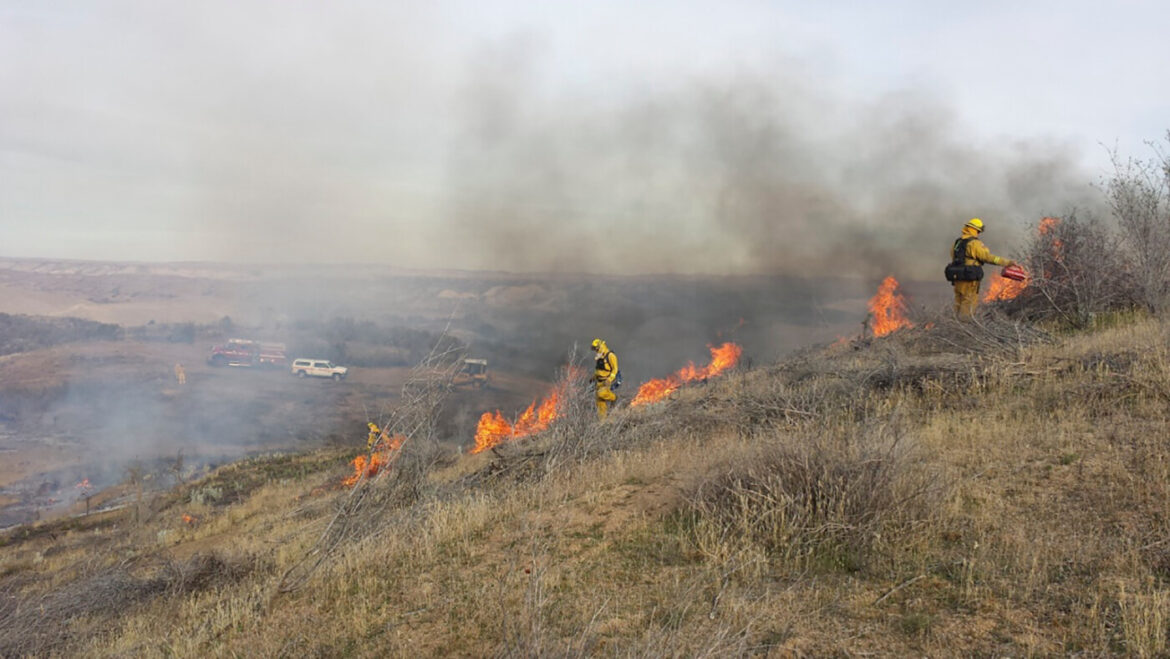California’s preparations to battle wildfires this year will not be slowed by the coronavirus pandemic, Gov. Gavin Newson vowed today, saying the state will purchase specially equipped helicopters and fire engines and hire hundreds of additional firefighters.
“We are not going to step back despite the economic headwinds,” the governor said during a news conference conducted in front of a fire truck from a station in Cameron Park, near Sacramento.
With the traditional start of California’s official fire season just a couple weeks away, state officials also provided details about how emergency evacuations might be safely managed in the face of a highly-contagious virus.
Mark Ghilarducci, director of the state Office of Emergency Services, said fire evacuees who have tested positive for the virus would be sent to separate evacuation centers. Some evacuees would go to hotels and segregated areas would be set up in public emergency shelters, such as gyms.
“We are mindful of the threats, we are mindful of the understandable anxiety that this time of the year brings to people, in addition to what’s going on with COVID-19,” Newsom said. “And I want folks to know that we have been preparing for this upcoming fire season and we’re not stepping back our efforts.”
Flanked by the state’s fire chief and its emergency director, Newsom outlined millions in additional funding he will seek for fire and emergency response, despite what is projected be a $54 billion budget shortfall. He previewed some of the fire-related additions that will be unveiled Thursday in the revised budget:
- A $127-million increase for the Office of Emergency Services
- $85.7 million for Cal Fire to hire personnel
- $50 million for grants to counties to manage wildfire-related power shutoffs
- $38 million for general disaster assistance
“The budget that I will announce tomorrow will include enhancements for wildfire preparation and preparedness across the board, as well as suppression strategies and opportunities to be more resilient in our recovery strategies,” Newsom said.
The equipment upgrades, in particular, are pricey. California paid $24 million each for a dozen specially-modified Black Hawk helicopters that fly at high speeds and are equipped to drop as much as 1,000 gallons of water. The first of the twin-engine helicopters already has been delivered, Newsom said.
The state also will add 26 wildland fire engines to its fleet by July, he said.
The number of wildfires in California has increased 68% since January compared to last year, although the acreage has been small: Some 1,135 fires have burned 1,317 acres since the start of the year, according to Cal Fire.
California intends to hire about 600 additional fire personnel, Newsom said, in part to fill holes created by fewer inmate fire crews, one consequence of the prison system’s early release programs. The state has lost 44 inmate crews from last year and projects losing as many as 80 this year.
State, local and federal authorities are preparing for the fire season by clearing trees and brush in vulnerable areas.
All but one of the state’s 35 high-priority fuels reduction projects had been completed. The projects are sprinkled around the state but concentrated in the fire-prone Sierra Nevada foothills. In some cases, the state assists local communities with fire-mitigation projects, conducts fire-break-clearing in forests or burns grasses next to highways and roads.
The projects moved the state closer to its goal of clearing or burning on 450,000 acres this year, a figure that includes federal and private land.
The state has struggled to meet its fuels-reduction goals. The projects can be costly and, in the case of prescribed burns, difficult and time-consuming to plan.
Cal Fire is only about halfway to its goal of reducing burnable fuels on 45,000 to 50,000 acres of state-managed lands, Cal Fire Chief Thom Porter said, adding, “We have a ways to go.”
